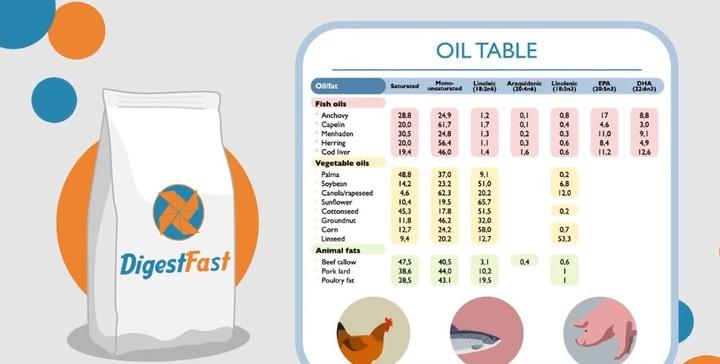Explore all the information on
Poultry slaughter process
Poultry processing involves the series of chains involved in the extraction of meat from poultry birds. On a small scale, poultry processing involves simple processes as one or a few birds are to be processed into meat. Commercial production of birds usually involves the slaughtering and safe processing of large quantities of domesticated birds like broilers under safe conditions for human consumption. Steps involved In poultry processing: stunning and killing, scalding, defeathering, removal of heads and legs, evisceration and inspection, cleaning and chilling, additional testing, cutting and deboning, packaging, and shipping.
1. Introduction Poultry constitutes the second most widely produced and eaten type of meat in Europe, its consumption being especially notable in some countries, such as England, Ireland, Portugal, Spain and France [1]. It is expected that in 2024, there will be a marked increase in the production and consumption of fresh poultry meat worldwide, representing 3.5% more than in 2023 and 4.4% more than in 2022 [2]. In recent years, great efforts have been made to reduce the...
Comments : 0
Recommendations: 0
1. Introduction The preservation of indigenous poultry breeds is not only for cultural and emotional reasons, but also for economic ones. This is particularly true when there is a demand for delicate products of special quality, in terms of their origin, production and processing [1]; Kohlschutter et al. [2] argued similarly. The exceptional quality, excellent variety of flavors, and dietary effects, based on the emotionally valued gastronomic tradition, are the prerequisite for the...
Comments : 0
Recommendations: 0
What is the pre-slaughter phase? The preslaughter phase is the last phase of the broiler chicken’s life before slaughter. This phase includes multiple steps: withdrawal of feed and water, catching, loading into transportation crates, and transportation by road, In some cases, chickens may be placed in lairage (waiting area)...
Comments : 0
Recommendations: 1
What is live haul? Turkeys are typically raised for 10 to 20 weeks, depending on bird sex, size, and product criteria for markets. Once the market weight is achieved, turkeys are herded, loaded, and transported to slaughter plants for stunning and processing. ...
Comments : 0
Recommendations: 1
The Unseen Cost of Price Fluctuation Poultry farmers and integrators live with constant uncertainty. One day, the live bird price is INR 100/kg; the next day, it's INR 70. Despite careful planning and biosecurity, they find themselves at the mercy of a market without controls, hedging tools, or predictability. This snake-and-ladder game isn’t just a minor inconvenience. For thousands of farmers and integrators, it means boom-or-bust cycles, mounting debt, and...
Comments : 0
Recommendations: 0
Ricky Thaper (Poultry Federation of India) comments on India's poultry industry growth data and processing needs in this Engormix interview during IPPE 2025 in Atlanta, USA.
...
Comments : 0
Recommendations: 1
From Market to Meal: A Guide to Safe Chicken Handling Author: A.Ashraf Chicken is a staple in many diets worldwide, prized for its versatility, affordability, and nutritional value. However, handling and storing broiler chicken improperly can lead to contamination by harmful pathogens, posing serious health risks. Whether you’re buying live chicken, fresh cuts, or frozen meat, understanding the risks and taking proper precautions is essential to ensure safety and maintain...
Comments : 0
Recommendations: 0
Colwayne Morris (Zinpro) speaks on carcass analysis, challenges found in processing plants, quality assurance, and cost reduction, in this Engormix interview during IPPE 2025 in Atlanta, USA....
Comments : 0
Recommendations: 2
Mobile slaughtering and direct farm sales –in Hall 26 – Lectures from science and industry – EuroTier 2024: 12 to 15 November in Hanover, Germany– World's leading trade fair for animal farming and livestock management – More than 2,100 registered exhibitors from 52...
Comments : 0
Recommendations: 0
1. Introduction Poultry refers to avian species (e.g., Gallus gallus domesticus—chicken; Anas platyrhynchos domesticus—duck) housed in a diversity of production systems (e.g., organic, free-range and conventional structures) that are dedicated to the production of poultry products, specifically chicken meat and table eggs for human consumption and eggs hatching for reproduction [1,2]. Bacterial contamination in poultry can be initiated by ingestion of contaminated feed or...
Comments : 0
Recommendations: 0
Animal welfare audits are performed to evaluate whether a hatchery, farm, or processing plant is meeting the specific animal welfare standards of a certification program. These programs may be internal to a certain company, or they could be a requirement for animal welfare certification. These certification programs...
Comments : 0
Recommendations: 1
by Lyndsey Johnston
A group of researchers from the Georgia Tech Research Institute, University of Saskatchewan, University of Georgia, Auburn University, USDA-ARS U.S National Poultry Research Center, and Tyson Foods studied the concept of an alternative slaughtering procedure on farm and its effects on carcass quality, carcass microbiology, and meat quality. The team hypothesized that the on-farm slaughter and transport system, or FSaT, may improve welfare and...
Comments : 0
Recommendations: 0
Introduction Campylobacter is a gram-negative commensal bacterium in the gastrointestinal tract of multiple wild and domesticated animal species [1]. According to the Center for Disease Control and Prevention (CDC), Campylobacter is estimated to cause 1.3 million cases of human illness in the United States annually [2]. In 2019, Campylobacter was the leading cause of U.S. foodborne illness, with an overall incidence of 19.5 per 100,000 population [3]. The...
Comments : 0
Recommendations: 0
Dr. Leonie Jacobs (Virginia Tech / Poultry Extension Collaborative) offers insights on poultry welfare and its potential for the future of production systems -and the industry as a whole-, during this Engormix interview....
Comments : 1
Recommendations: 1


Reduced crude protein diets maintains growth and yield parameters of mixed-sex broilers while reducing nitrogen excretion
Suggested link
Dr. Leonie Jacobs (Virginia Tech / Poultry Extension Collaborative) explains how poultry welfare has gained relevance and created awareness in the industry, and comments on some interesting projects, during this Engormix interview....
Comments : 1
Recommendations: 0
...
Comments : 0
Recommendations: 0
INTRODUCTION Listeria monocytogenes is a Gram-positive, facultative anaerobe that is the causative agent of listeriosis (Gudbjörnsdóttir et al., 2004). They are considered saprophytic organisms with the capability to adapt to an ever-changing environment because they possess multiple stress response mechanisms to overcome varying temperatures, salt concentrations and pH (Berrang et al., 2000; Milillo et al., 2012a; Giaouris et al., 2015; Saldivar et al., 2018). Listeria...
Comments : 0
Recommendations: 0
The Meat Institute is hosting several special workshops at the International Processing & Production Expo (IPPE) in Atlanta between Jan. 29 – Feb. 1, 2024.
The first featured session, Food Safety Design Principles Workshop, will provide an in-depth overview of the 10 Principles of Food Safety Design and how to apply these principles in processing facilities. This workshop will take place over two days – Jan. 29 from 1 p.m. to 5:30 p.m. ET and Jan. 30 from 7 a.m. to 2...
Comments : 0
Recommendations: 0
INTRODUCTION The World Health Organization recognizes antimicrobial resistance (AMR) as a major health threat in the 21st century (1). A global projection predicts that the increase of deaths linked to AMR will develop from 700,000 in 2016 to 10 million deaths per year in 2050 while 100 trillion USD could be lost by 2050 (2). In this scenario, the use of antibiotics in food animal production is one of the most important issues contributing to the AMR crisis. In fact, over 50% of...
Comments : 0
Recommendations: 0
by Sam Shafer
Consumers often find goose meat low in tenderness, possibly because of conventional commercial methods of chilling carcasses. Goose is a popular dish in Taiwan, where a recent study tested "stepwise" chilling with calcium chloride incubation to improve muscle proteolysis and meat tenderization.
Conventional commercial goose processing involves submerging carcasses in ice-cold water right after harvest, which induces "cold shortening" of...
Comments : 0
Recommendations: 0









.jpg&w=3840&q=75)




























